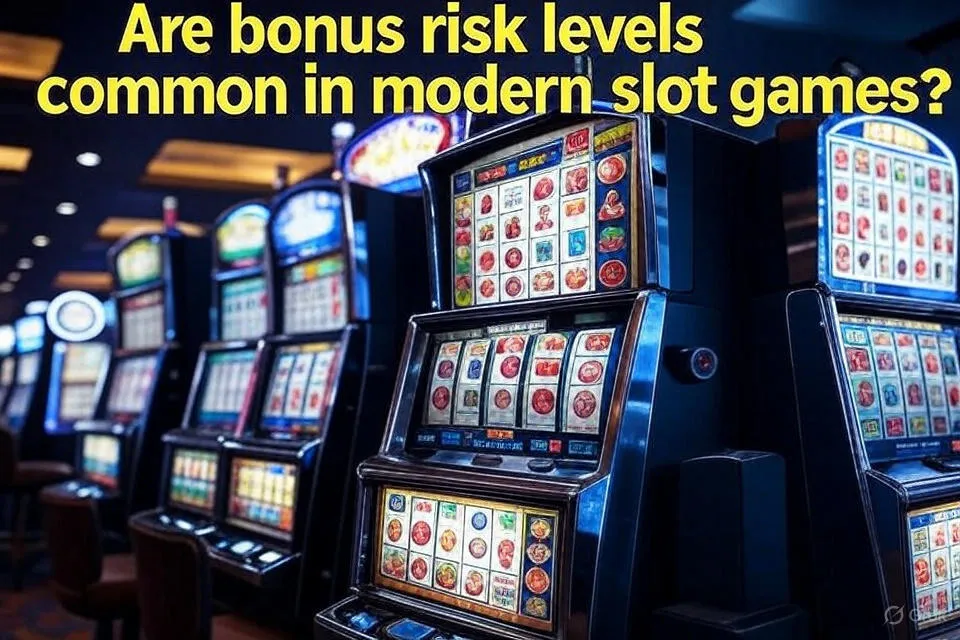Understanding the Rise of Bonus Risk Levels in Online Slots
The world of online slots has transformed dramatically over the past decade. What was once a simple format with three reels and a handful of paylines has evolved into a universe of immersive themes, intricate mechanics, and ever-changing features. One of the more intriguing developments in modern slot design is the rise of bonus rounds with variable risk levels. These features have added new layers of strategy and excitement—but they’ve also raised important questions about volatility, player control, and game fairness.
For many seasoned players, this added complexity is a welcome innovation. Bonus risk levels allow players to choose how aggressively or conservatively they want to approach the game. This freedom can impact everything from win potential to how long your bankroll lasts. But not every gambler understands how these options work, and they’re not always available across all casinos. They’re becoming especially noticeable at non GamStop casinos, where more flexibility and alternative game types are typically offered.
These casinos, which operate outside the UK’s GamStop exclusion system, often feature games from international developers. As a result, players encounter bonus mechanics that might not be as common on UK-licensed platforms. Let’s explore what these bonus risk levels really mean, why they’re becoming more popular, and what players should know before diving in.
What Are Bonus Risk Levels in Slot Games?
Customizing Your Bonus Experience
Bonus risk levels are a relatively new concept designed to give players more control during bonus rounds in slot games. Instead of entering a preset bonus feature, players are often presented with a choice. For example, you might get to pick between three different free spin modes—each with its own combination of volatility and potential payout.
A lower-risk option might offer more spins with lower multiplier values, creating a longer but more balanced experience. A higher-risk option might give fewer spins or tougher conditions but with the possibility of massive wins. In essence, the player is betting on their tolerance for risk, just like at a table game.
This element of control adds a strategic twist to a game genre typically associated with luck. It bridges the gap between chance and choice, giving players a sense of empowerment and personalization. In today’s slot landscape, where user engagement is key, this innovation aligns perfectly with what modern gamblers are looking for.
Examples of Popular Games with Risk Options
Slots like Extra Chilli, Money Train 2, and Gates of Olympus are well-known for incorporating risk-based bonus structures. Some allow players to gamble for extra free spins after triggering a bonus. Others let players buy into bonuses and then select the volatility level, tailoring the gameplay experience to personal preferences or even bankroll size.
Why Are Bonus Risk Levels Becoming More Common?
Demand for Player Choice and Deeper Gameplay
One reason for the growing popularity of bonus risk levels is the player demand for more engaging and varied gaming experiences. Standard slot spins can become repetitive, and bonus rounds have become the new arena where excitement builds. Adding options within those bonuses increases the anticipation and depth of gameplay.
It’s also a response to different playing styles. Not all gamblers want the same thing—some enjoy longer sessions with steady wins, while others chase big payouts with higher variance. Game developers are responding by including flexible bonus features that cater to both types of players within the same game.
Influences from Casino Platforms and Market Trends
At many international platforms, especially non-UK regulated ones, developers have more freedom to experiment with features that may not yet be mainstream. Non GamStop casinos are often first to adopt or showcase these innovations, largely because they work with a broader range of software providers and are not limited by UK Gambling Commission rules. These platforms become a kind of testing ground for new mechanics, and bonus risk levels are one of the concepts that have taken off.
For developers, the benefit is clear: risk-based bonuses increase player retention, add replay value, and even create a reason for players to revisit the same game with different approaches. For casinos, this translates to better engagement and more consistent user activity.
Are There Downsides to Risk-Level Bonuses?
Volatility Can Be Misleading
While the idea of choosing your bonus risk level sounds appealing, it can also lead to misconceptions. A higher-risk bonus might promise larger payouts, but it also comes with greater losses or empty spins. Newer players may interpret “high risk” as “better rewards,” without fully understanding the math behind volatility.
This can create frustration or even promote unhealthy gambling habits if players constantly chase the highest potential payout. It’s important for users to have realistic expectations when using these features. Understanding variance, bankroll management, and payout patterns is essential when engaging with high-risk bonuses.
Not All Games Explain It Clearly
Another issue is that not all games present these options clearly. In some cases, the choices are hidden behind symbols or icons, with little explanation of what each risk level actually means. Without transparency, players may make decisions that don’t align with their goals or preferences, simply because they don’t have enough information.
This is one area where developers could improve—by providing more intuitive interfaces and clear explanations of what each choice entails.
How to Approach These Features Responsibly
Understand the Volatility
Before selecting a bonus risk level, take a moment to review the game’s volatility settings. Many slot games will indicate whether a mode is low, medium, or high volatility. Knowing this helps you make informed decisions that align with your playing style and budget.
If you’re a casual player or trying to make a session last longer, low to medium-risk bonuses might be the better route. If you have a bigger bankroll and are playing for thrill and big wins, then high-risk options may be worth exploring—just don’t expect consistent results.
Set Limits and Stick to Them
One of the best ways to enjoy these features without falling into risky patterns is to set limits. Define how much you’re willing to lose in pursuit of a bonus round and avoid chasing losses after a failed high-risk choice. Some players also benefit from setting win goals, cashing out when they’ve had a good run rather than continuing to test their luck.
Responsible gaming should remain at the heart of every gambling decision, especially when additional features introduce more complexity and temptation.
Final Thoughts
So, are bonus risk levels common in modern slot games? The answer is yes—and they’re becoming even more so. These features provide a new layer of engagement by allowing players to shape their gameplay experience. They offer flexibility, variety, and a sense of control that many users find exciting and empowering.
While they are especially prevalent at international and non GamStop casinos, their influence is spreading across the industry as developers aim to meet growing demands for customizable gaming. However, as with any form of gambling, it’s crucial to understand the risks and approach these features with awareness.
Bonus risk levels are not a shortcut to higher payouts. They’re a tool—a way to tailor your experience based on your risk tolerance and gaming goals. Use them wisely, and they can make your slot sessions more enjoyable, strategic, and memorable.





